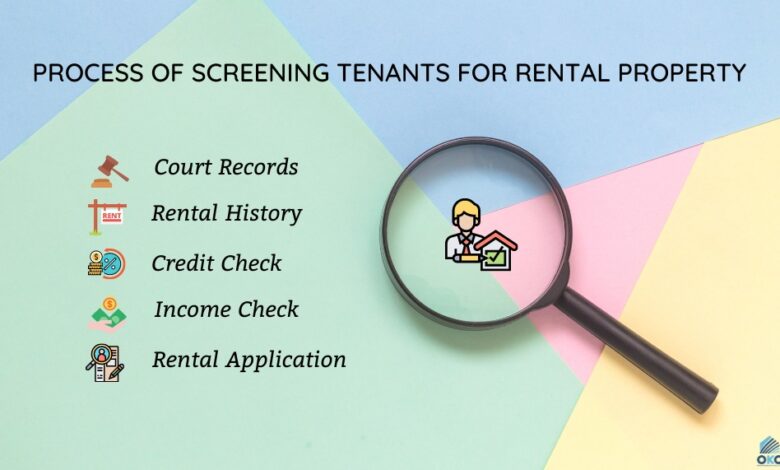Tenant’s Guide to House Rental Application Screening: Preparing for Approval

Renting a house is an exciting step, but it often involves a thorough screening process by landlords or property management companies to ensure the right tenant is selected. If you’re in search of a rental property, you can explore various options by searching houses for rent on your favorite real estate site. In this guide, we’ll walk you through the tenant’s perspective on house rental application screening and how to prepare for approval.
Understanding the Screening Process
The rental application screening process is a standard practice used by landlords and property management companies to evaluate prospective tenants. Here’s what you can expect during this process:
1. Application Form
You’ll be asked to complete a rental application form, providing personal information, rental history, employment details, and references.
2. Credit Check
A credit check is typically conducted to assess your creditworthiness. Landlords want to see if you have a history of paying bills and debts on time.
3. Background Check
A background check may be performed to review your criminal history and ensure you don’t pose any security risks.
4. Rental History
Landlords may contact your previous landlords to verify your rental history. They may ask about your payment history, whether you caused any damage, and if you followed lease agreements.
5. Employment Verification
Landlords may contact your employer to confirm your employment status, income, and job stability.
6. References
Providing personal and professional references can help establish your character and reliability as a tenant.
Preparing for Approval
Now that you know what to expect, here’s how to prepare for a successful rental application screening:
1. Gather Necessary Documentation
Before starting the application process, gather the necessary documentation, including:
- Proof of income: Pay stubs, employment verification, or tax returns.
- Rental history: Contact information for previous landlords.
- Personal references: Names and contact details of individuals who can vouch for your character.
- Identification: A valid ID or driver’s license.
2. Check Your Credit Report
Obtain a copy of your credit report and review it for any discrepancies or errors. If you find mistakes, take steps to correct them before submitting your rental application.
3. Prepare a Rental Resume
Create a rental resume that includes your rental history, employment details, references, and any other relevant information. A well-organized rental resume can make a positive impression.
4. Be Honest and Transparent
When completing the rental application, be honest and transparent about your rental history, employment, and any potential issues. Lying or providing false information can result in application rejection.
5. Address Past Issues
If you have past issues on your rental history, such as late payments or evictions, be prepared to address them honestly. Explain any circumstances that led to these issues and provide evidence of your current responsible renting habits.
6. Communicate with References
Before listing someone as a reference, inform them about your application and request their permission to be contacted. This ensures they are prepared to provide a positive reference if contacted by the landlord.
7. Show Proof of Financial Stability
Landlords want to ensure you can afford the rent. Provide proof of financial stability, such as pay stubs or bank statements, to demonstrate your ability to cover the rental expenses.
8. Pay Application Fees
Expect to pay an application fee when submitting your rental application. This fee typically covers the cost of background and credit checks.
9. Write a Letter of Introduction
Consider writing a letter of introduction to accompany your rental application. In this letter, introduce yourself, explain why you’re interested in the property, and highlight your qualities as a responsible tenant.
10. Follow Up
After submitting your rental application, follow up with the landlord or property management company to ensure they received it. This demonstrates your eagerness and commitment to the rental process.
What to Do If Your Application Is Rejected
In some cases, your rental application may be rejected. If this happens, don’t be discouraged. Here’s what you can do:
1. Ask for Feedback
Politely ask the landlord for feedback on why your application was rejected. This information can help you address any issues and improve your chances in the future.
2. Consider Co-Signers or Guarantors
If you have a weak rental history or credit, consider having a co-signer or guarantor with a stronger financial background to support your application.
3. Look for Other Properties
Continue your search for other rental properties that may have different screening criteria. Not all landlords have the same requirements.
Conclusion
Preparing for the rental application screening process is crucial to increase your chances of approval. By gathering necessary documentation, being honest and transparent, and demonstrating your financial stability, you can present yourself as a responsible and reliable tenant.
Remember that each rental application is a learning opportunity, and rejection doesn’t necessarily reflect your character. Use feedback from landlords to improve your application and continue your search for the right rental property that suits your needs. With diligence and preparation, you can secure a comfortable and suitable place to call home.



